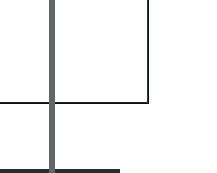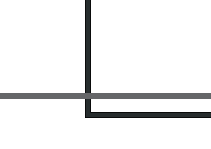Adrian Notz
Co-director of Exhibitions and Programmes,
Director of International Projects
Cabaret Voltaire, Zurich
Curator of the exhibition Dada East, the Romanians of Cabaret Voltaire
Can you tell us the Dada East Story, how did you start the project?
First we had the idea ofcollaboration between the Romanian Embassy in Switzerland and Cabaret Voltaire from Zurich. The cultural attaché Vasile Igna and the ambassador, Alexandru Irimia announced us that they would like to make a symposium about Romanian avant-garde. I tried to find all the scholars, dada specialists etc. to invite them at the conference.
Some of us had already been in Romania, in Moinesti and Bucharest. In March 2006 I have also been in Curtea de Arges, with Nicolae Tone, who made an exhibition about Urmuz (in a pizzeria).
Then a very important moment was the publishing of Tom Sandquist’s book Dada East. The Romanians of Cabaret Voltaire.
I established some contacts in Romania, Matei Bejenaru and then Dan Perjovschi, who is actually the curator of the exhibition; he introduced me to Mircea Cantor, Ciprian Mureşan and Cristi Pogăcean. Then I met again Mircea and Dan in Paris and I convinced Mircea to participate in the exhibition.
I visited Tom Sandquist in Stockholm to bring a part of his dada archive in Zurich and he told me about Ștefan Constantinescu.
Dan suggested taking Ion Grigorescu’s video Dialogue with Comrade Ceausecu and I wanted to have an insert from the communist time in the exhibition. Then I found Harun Farouki’s film and Ștefan Constantinescu’s video.
That’s about how it all began.
What about the installation of the show?
I worked together with Philipp Meier and Juri Steiner, from Cabaret Voltaire, in Zurich. We have been last year, in May at the Romanian avant-garde Symposium in Bucharest.
First, we had the idea to make an exhibition about the short period of Marcel Iancu and Tristan Tzara, before they came to Zurich.
Then we thought to have also Romanian contemporary artists. We thought at a historical nucleus and the contemporary artists rotating around the dada nucleus. So the main idea, the basic movement is the rotation, a kind of carousel.
I also worked with a company from Zurich, Kunstumsetzung and they made the suggestion of the carousel.
It has a research character, a detective work to consolidate all the material and the structure.
Do you re-install the exhibition, considering the particularity of each space where you take it, for instance like in Sibiu, at Brukenthal Gallery?
In Sibiu, the space was bigger then in Zurich, and fortunately, there was a pillar in the center, so it was perfect for the carousel idea. In Prague we will take the communist insert out and we will add a literary section.
You include also other artists, not only from Romania?
Yes, that’s the idea, for example in Stockholm I would like to involve more Ștefan Constantinescu and Tom Sandquist. In Warsaw will also try to find contemporary artists from there. So it will be a work in progress. I’m also interested in making interviews with people starting from the same question, What is your relation to Dada? Like the one with Ion Grigorescu, three hours of talk.
I’ll try to find artists, type of artists related to Dada.
Do you think that there is such a typology?
I think that the artists which I choose, from Romania they have a kind of historical consciousness. I know about other Romanian artists like Vlad Nanca, Gorzo, but their work is different, is not related to the avant-garde. Another idea of the exhibition was to connect the world of visual arts with the Romanian avant-garde scholars. That was one of the shocking things that I experienced in Romania, the scholars are not very interested in the contemporary visual art.
What is happening in Zurich, do you have academic people coming to the shows and being interesting in contemporary art?
Actually yes, for example, there was a big movement in Zurich for the opening of Cabaret Voltaire. Before, it couldn’t be open because the building was squatted by a group of artists. The public and the politicians were involved to recuperate the cultural heritage of the building and it was reestablished as an institution. And then everybody wants to be a part of the project (Swatch, for example).
We also collaborate with Dada scholars and we have a basic concept, named Dadalogie and Postdada. These are the two polls of Cabaret Voltaire.
It’s an oscillation between the historical research and the impact of dada today.
Do you feel that touring this exhibition you can create also a kind of network of Cabaret Voltaire, in Europe?
There was an idea, independent from the Dada East tour. At the opening in Zurich we had the idea to find all the Spiegelgasse 1 that exist in the world and to connect them, to install letter boxes in which one and make an official institution. A kind of embassies network of Cabaret Voltaire.
Are you thinking to extend the Dada East project, including other Romanian artists?
I see the whole thing as a project, not just as an exhibition, it’s important to get to know people, to have conferences, maybe a catalogue at the end of the tour.
So the exhibition it’s a kind of a tool, in order for you to scan the new places?
Yes, a carousel, a reactor to move the Dada East project. It’s the idea of speed, velocity.
Also the futurist idea. And constructivist. Merzbau.
With the boxes it’s also cubist.
Do you believe, these days in the idea of the total work of art?
I think yes, but there is always a problem with “the total work of art”. You know, Hitler and Stalin, they also made total works of art.
More total then art…
I like the German word, Gesamtkunstwerk. At the Merzbau Symposium that we organized in Cabaret Voltaire we invited Yona Friedmanwho explained the Merzbau concept.
Merzbau is not about controlling everything, but about accepting everything, like in a dynamic process, it’s actually to create something with the public, with the society. Merzbau, as a total work of art would be to find the way how to create a work of art with the society.
With the Dada East project I’d like to create also a kind of feedback – loop. A term used by Obrist, talking about Merzbau.
Which are the other projects in Cabaret Voltaire?
Merzbau, a kind of annual symposium, around the question What is your relation to the Merzbau, we are working also on a website, an open source, where everybody can contribute and a conference about this. The first conference was about Historical dimensions and contemporary potential, the last one was more focused on the idea of space being in a way performative, I used the term “installed event sculpture”, the title of my diploma, we invited among others Thomas Hirschhorn, Peter Friedl, Angelika Nollert. The next idea will be “accelerated Merzbau”, the term of Rem Koolhaas.
How you would define Cabaret Voltaire today, a center for contemporary art, an institution, an informal place?
No, we are Cabaret Voltaire, just Cabaret Voltaire.
I will say that it’s a cultural space, for art, theatre, a café, a concert space, so it’s not only a contemporary art center.
Other projects from Cabaret Voltaire are: the shop, it’s also a project, Radical Chic, were we present objects, radical and chic, for example Arafat scarf produced by Givenchy, Eva Morales’ (the president of Bolivia) pullover. There is also a kind of research field and with the shop (actually we are on a shopping street) a lot of people come in. We have Christoph Büchel carpet with the World Trade Center. We have T-shirts which were produced by artists. One of the top was one with the words: In the East the sun rises or I surf the tsunami.
We also have right now, two spiders robots who produce drawings all day and than we sale the drawings. They have an hourly salary, twenty francs by hour. So, you can come and take a four hour drawing for eighty francs. It’s amazing, a lot of people stand in front of the window, to look at it, to meditate and they ask to buy the drawings.
How we could name this? It’s not a ready made, could we say “robotic” art?
I think it’s a very new form of art.
You can compare it with Machine or Aparativekunst, or with Arp’s drawings, using coins.
The robots, they are made by an engineer?
They are made by an artist and an engineer, it’s a kind of media art, robots art.
What about Reading Lenin?
It’s a project made from Rainer Ganahl, he will do it also in Moscow and Warsaw. The idea is of course, that Lenin was the neighbor of Cabaret Voltaire, he was a Dadaist. Marcel Iancu mentions that Lenin was in Cabaret Voltaire, they had discussions. He talks about the Mongolian face of Lenin that he sows in the crowed. There is also the book of Dominique Noguez about Lenin and dada. And following his theory there were reading sessions about Lenin. Lenin is a Dadaist, so we want to have Lenin’s body (the sculpture from Moscow) in the Cabaret Voltaire.
Another exhibition was on the topic of hacking. We collaborated with a media group and the Opera House from Zurich. They hack in to the Opera, taping la Bohema and then the opera was transmitted by phone all over the city. It’s started from the idea that one of the inventors of the telephone wanted to invent the telephone in order to let all the people listen to the opera. And also, in Zurich the Opera House is the institution that gets the most money, 450 millions Swiss francs by year, so we can hack them easily. There will also be workshops with other activists groups. The media group is called Beatnick, they will be also in Warsaw and there they have a workshop called How to make your own private pirate TV station? (It’s actually easy, it works with an antenna and the internet).
In Geneva we planned a conference about Dada and the Economy, the theory of“the creative destruction” combined with the idea that dada can work as an economy strategy. My aim is to once speak at the World Economic Forum, in terms of Dada.
Philipp Meier had the idea of the show called Motherland, with music from many places from Africa.
How is the public of Cabaret Voltaire, the audience?
It’s quite different, we don’t have a target audience. There are tourists, students, artists, older people coming for readings, shoppers from the street, it’s very mixed.
We are always fighting for the audience; there are so many places in Zurich and not enough people to see all of them.
This interview was recorded by DEOB (Dada East Office Bucharest – Doina Anghel, Angelica Iacob, Raluca Voinea) on the way from Sibiu to Bucharest, March 2007.





















